Applications of Discrete Event Simulation in Automotive Systems
VerifiedAdded on 2022/09/24
|8
|1098
|24
Report
AI Summary
This report provides a comprehensive analysis of discrete event simulation (DES) techniques and their applications within the automotive manufacturing industry. It presents three case studies illustrating the use of DES to address various challenges. The first case focuses on optimizing powertrain manufacturing, specifically detecting bottlenecks and improving material handling. The second case explores the application of DES in optimizing the layout of a manufacturing facility, aiming to minimize build-up areas and create space for new projects. The final case study investigates the use of DES to test the production capacity of a flexible manufacturing system (FMS) in an automotive context. The report highlights the benefits of DES, including its ability to optimize system throughput, allocate manpower efficiently, and compare operational options. The study utilizes simulation software like WITNESS to model and analyze different scenarios, emphasizing the importance of DES in addressing complexities like those arising from flexible manufacturing and unpredictable real-world variations in the automotive industry. The report includes references to relevant research and provides valuable insights into how DES can be a powerful tool for strategic decision-making and process optimization in automotive manufacturing.
1 out of 8
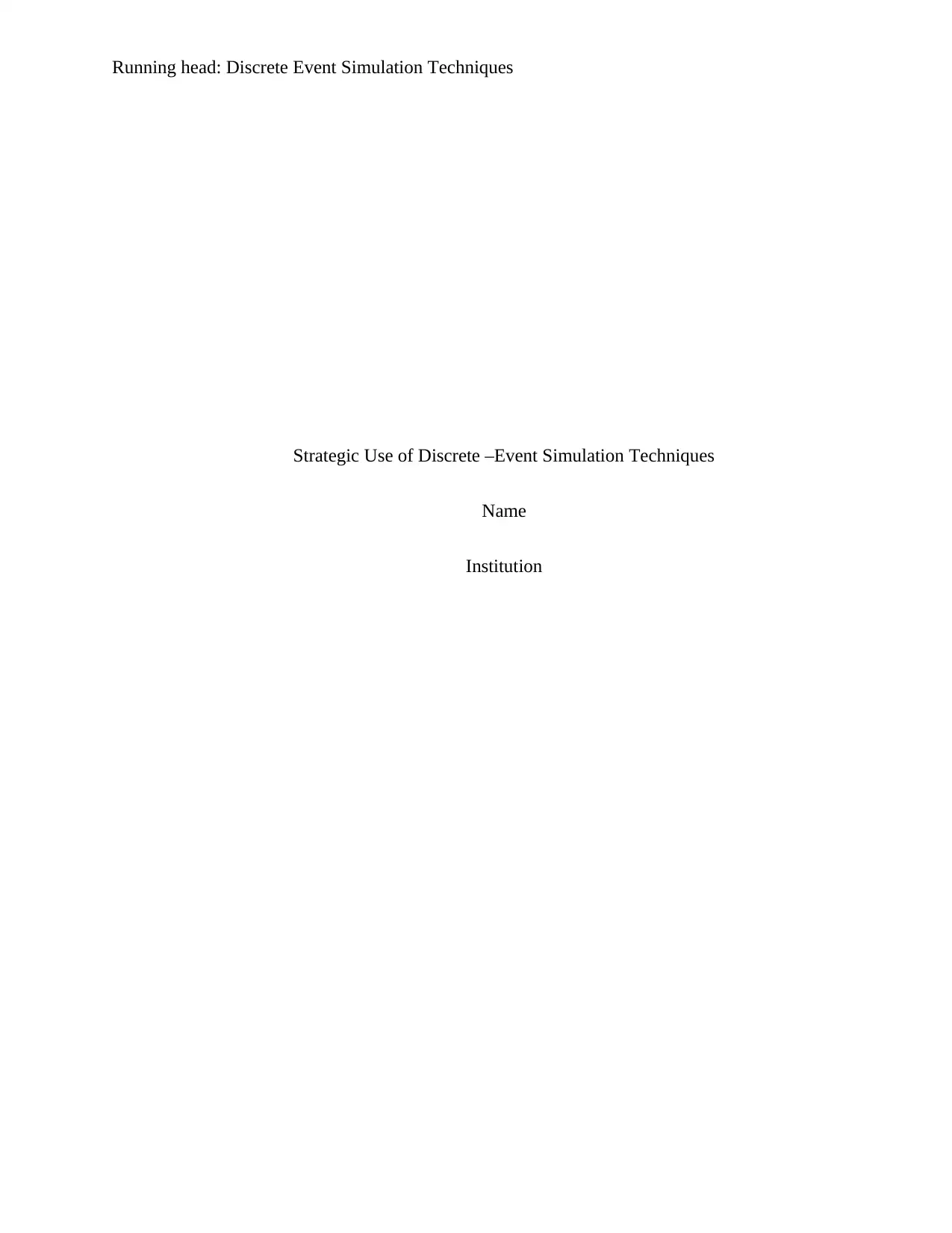
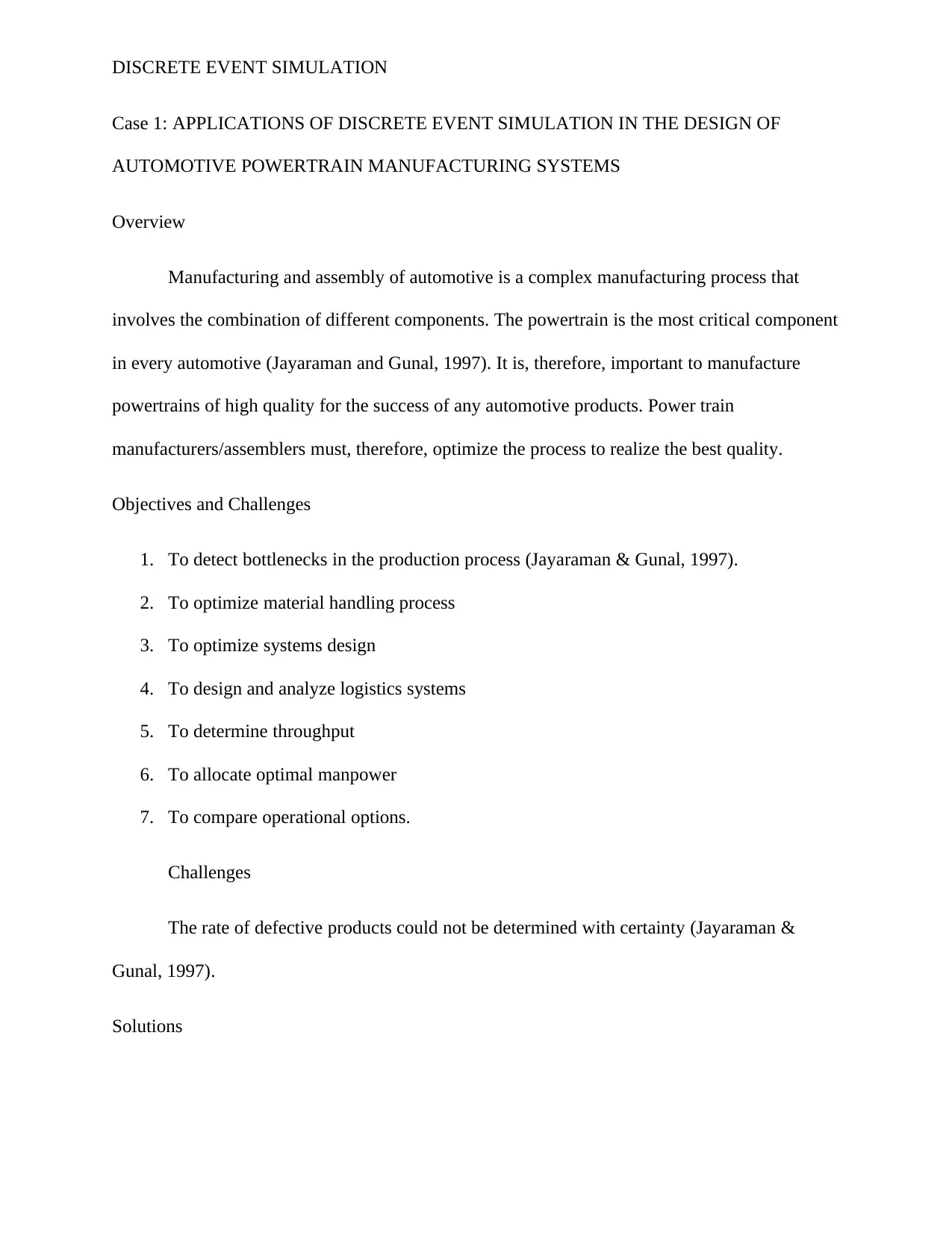
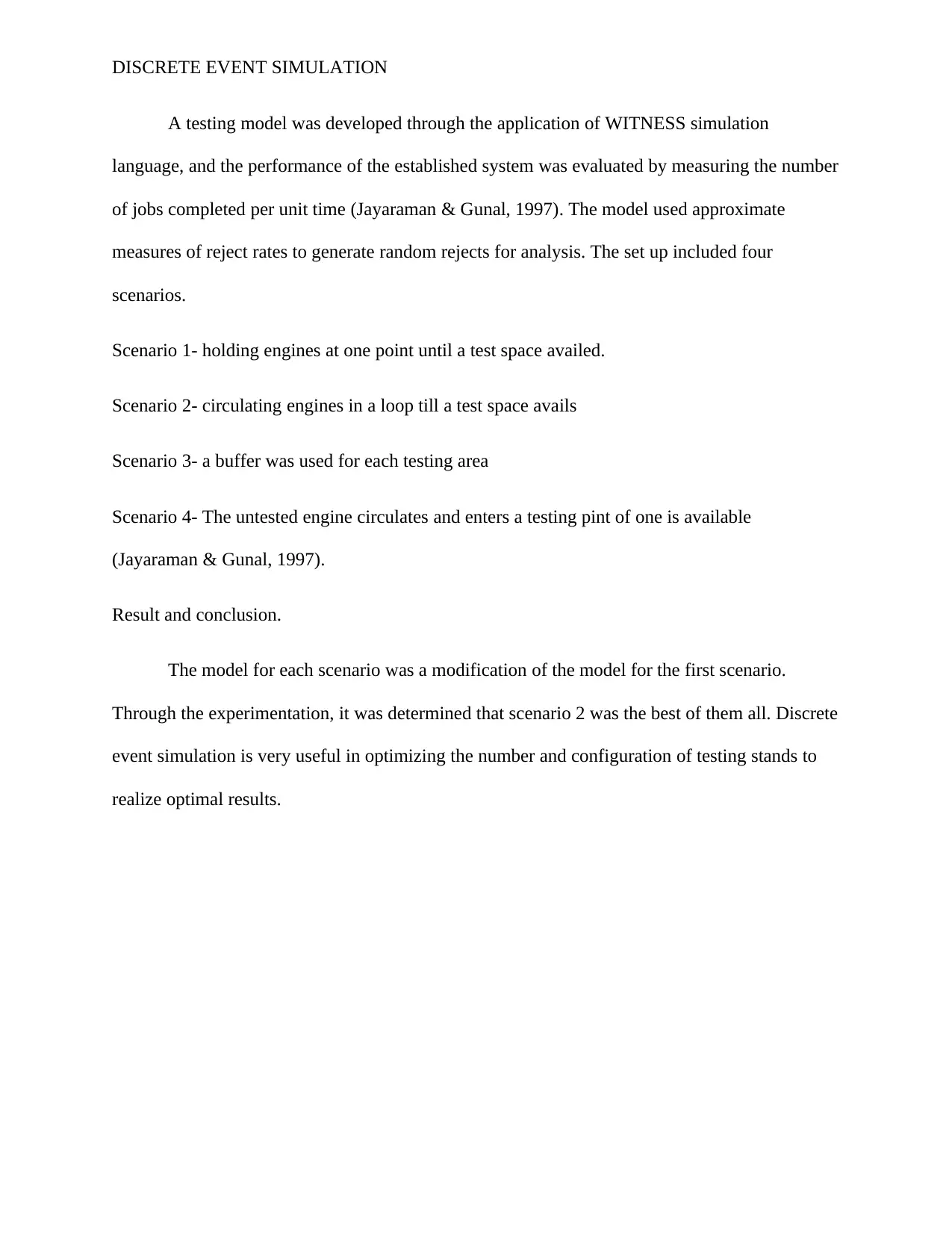

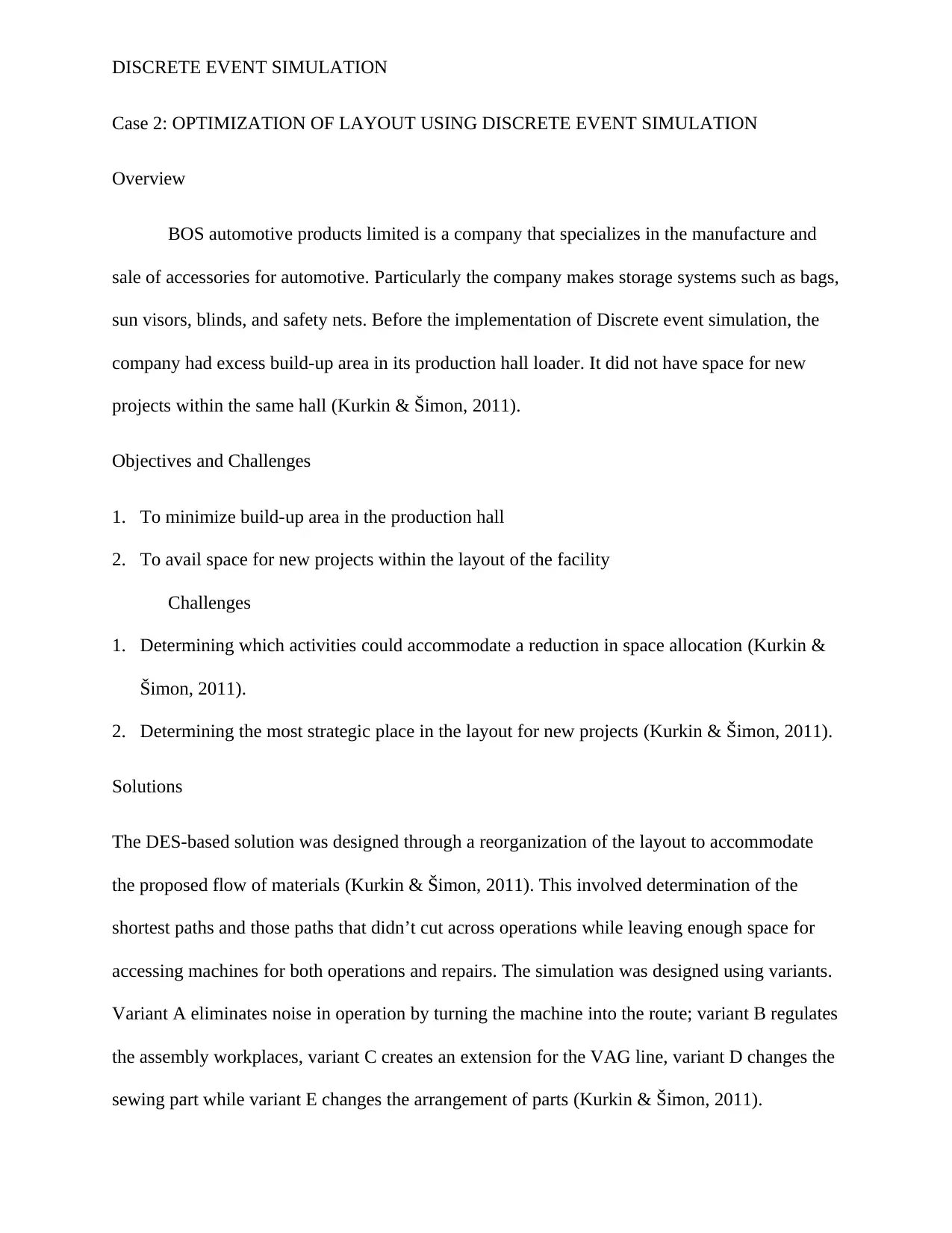

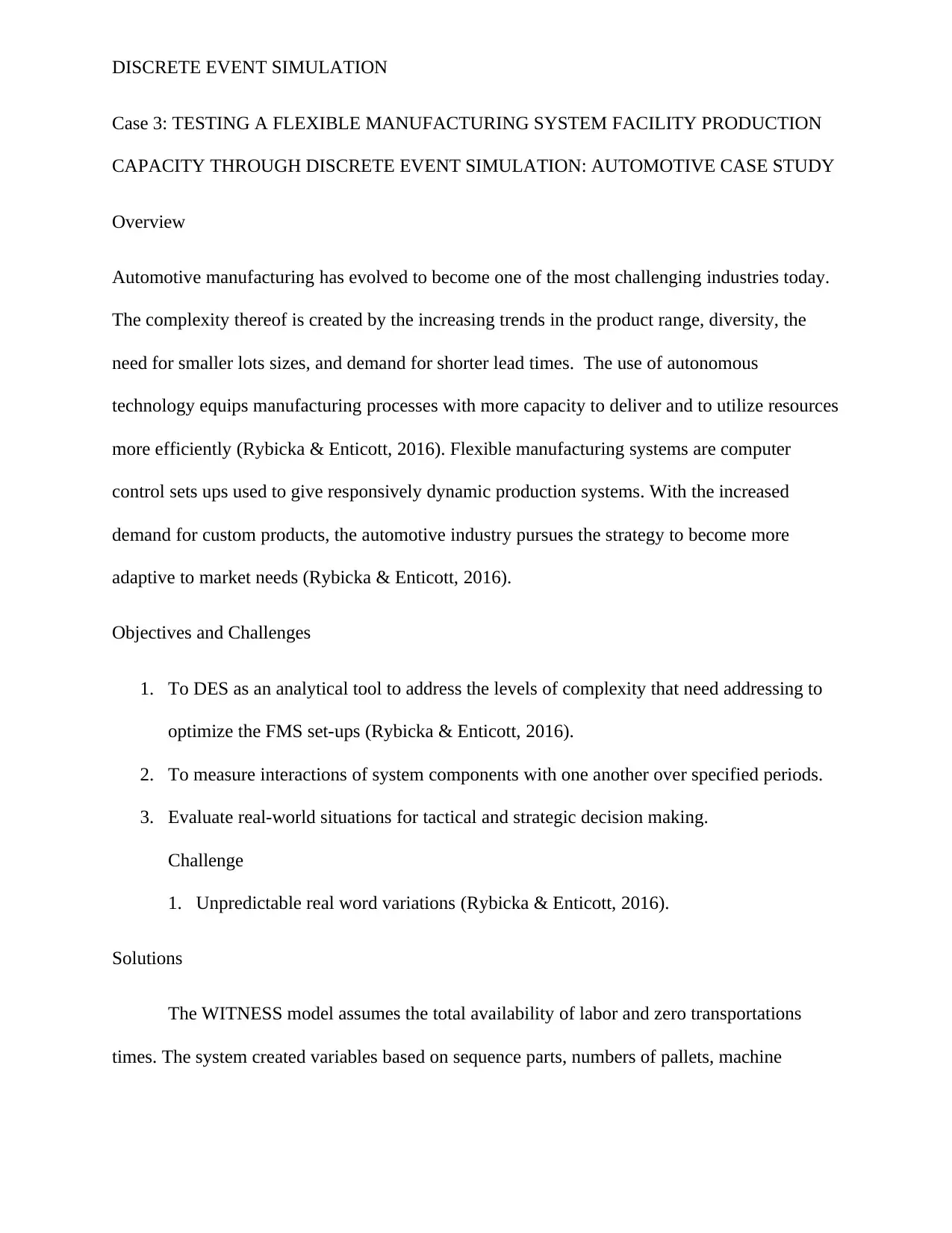
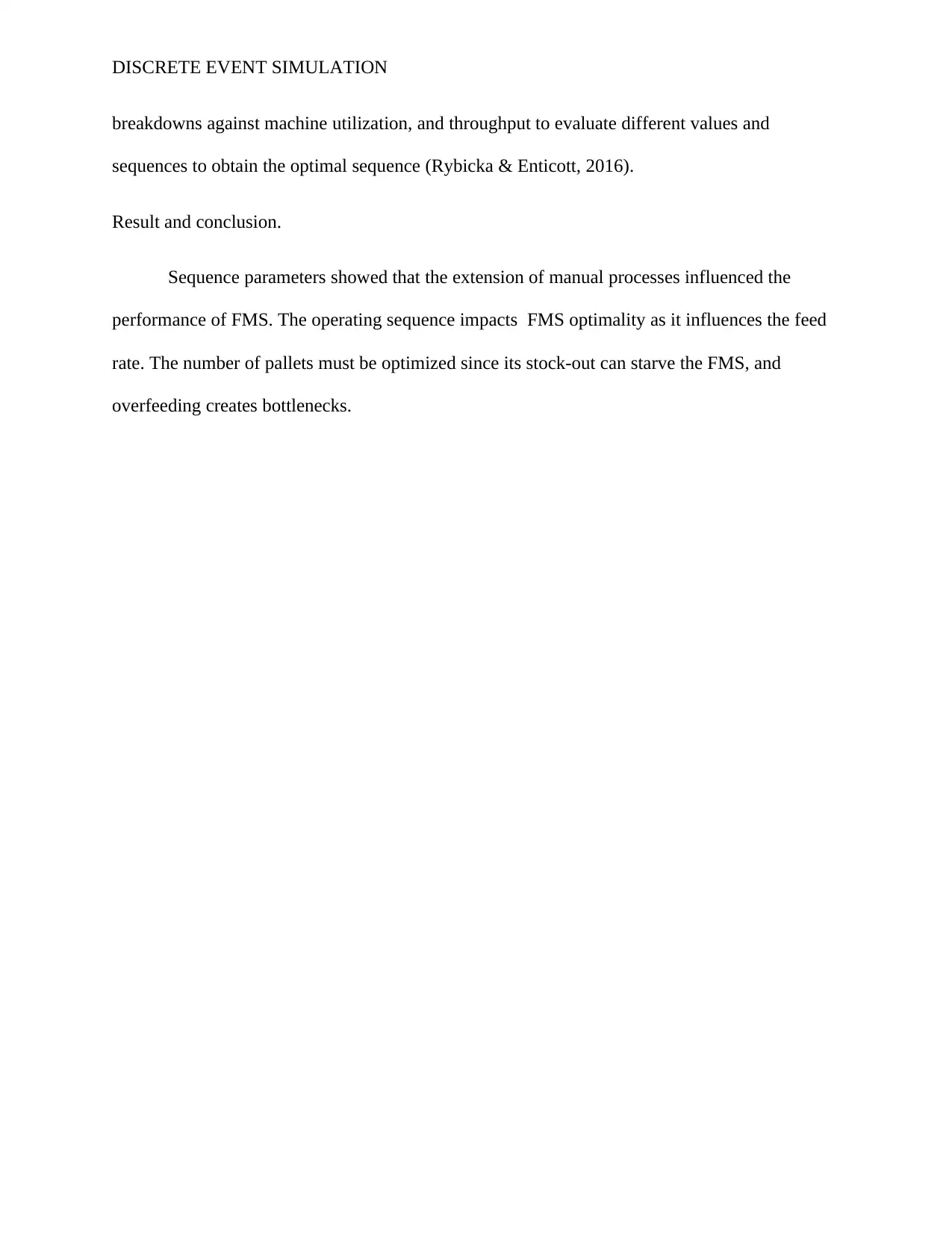
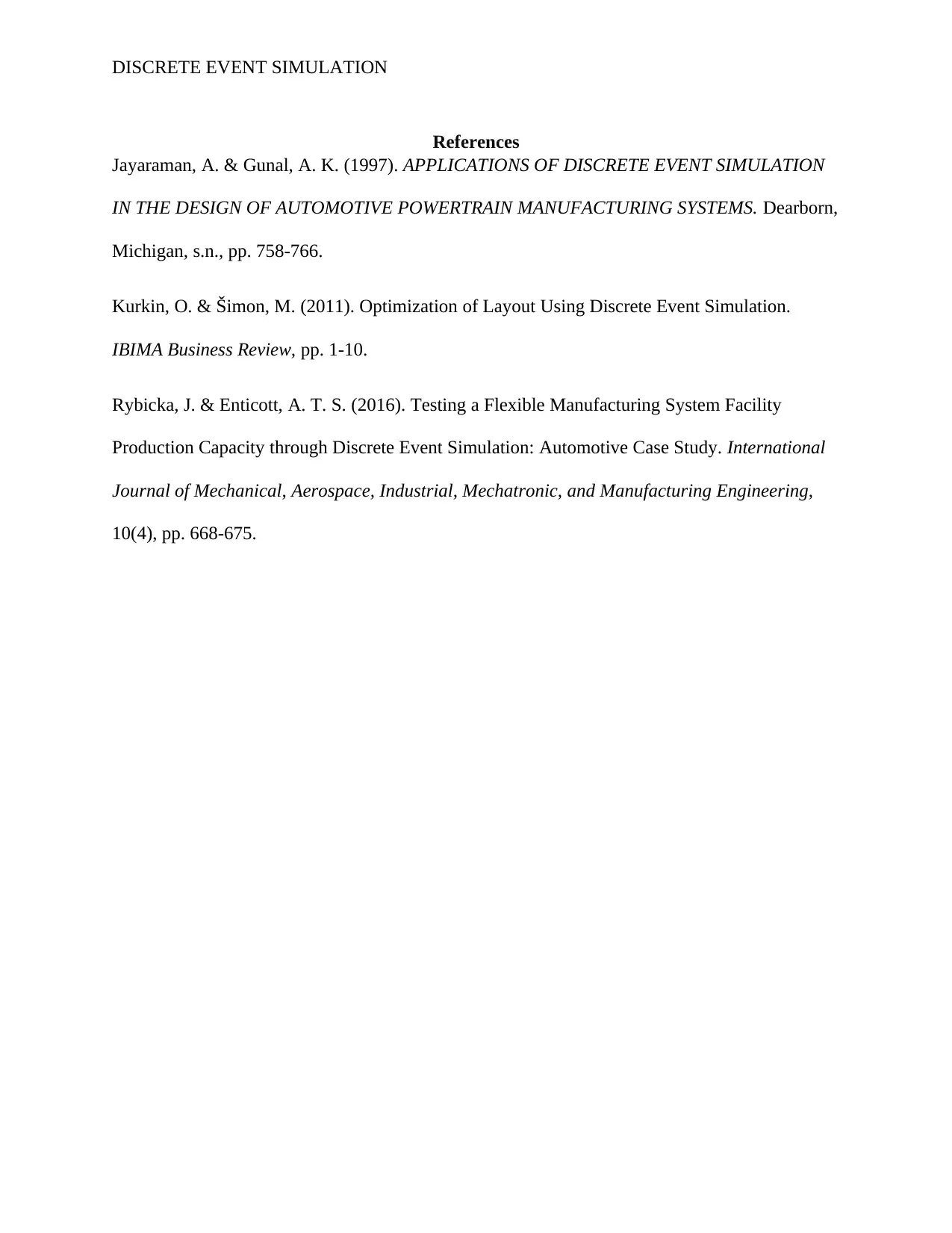
![[object Object]](/_next/static/media/star-bottom.7253800d.svg)